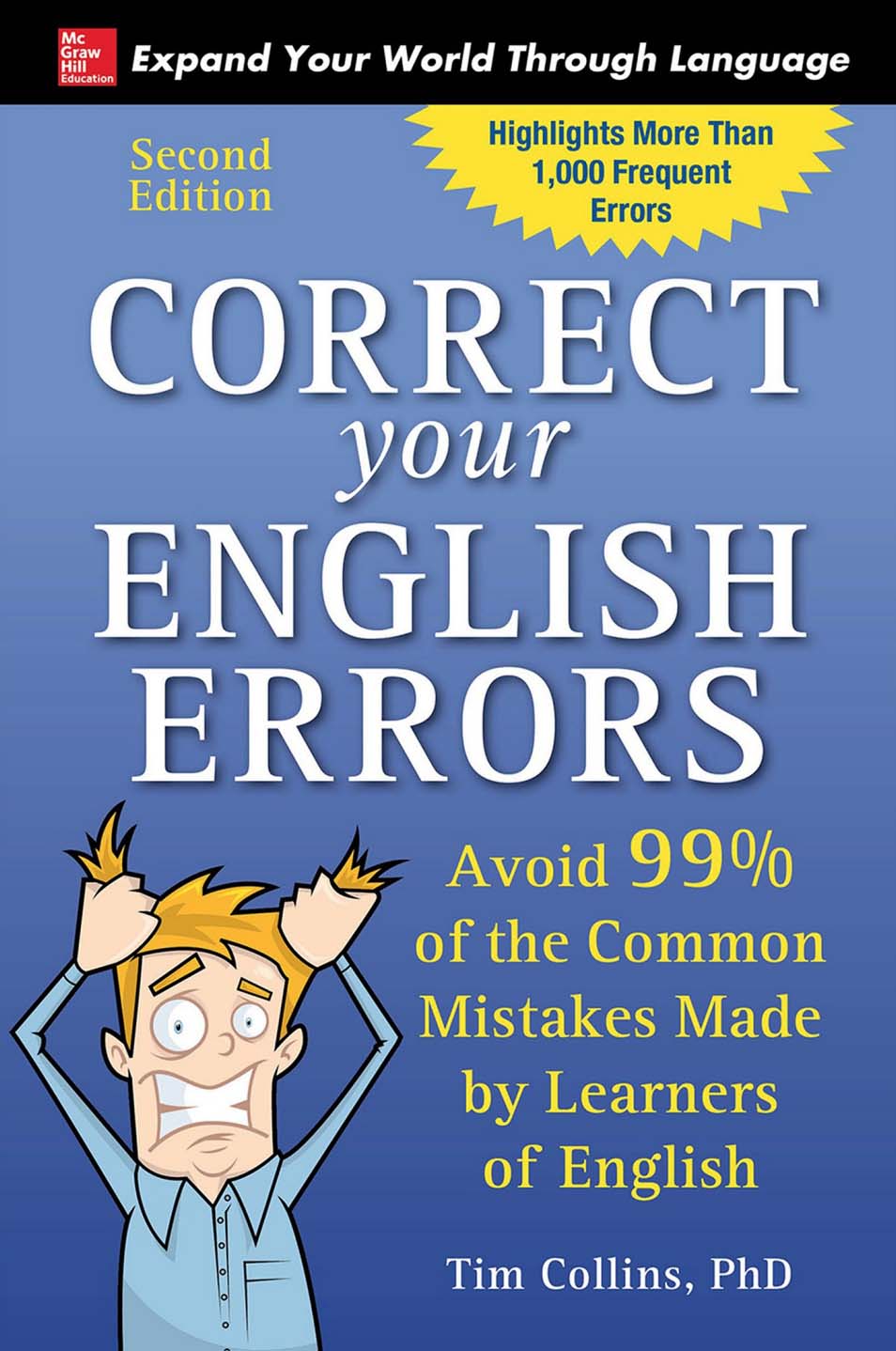Correct Your English Errors by Tim Collins – Avoid 99% of the Common Mistakes Made by Learners of English
Speak and write English as if it were your native tongue!
Are you tired of making the same mistakes in English again and again? End the bad habits that can leave the people you talk to confused. Correct Your English Errors warns you of hundreds of typical errors learners make and explains the reasons behind the mistakes, so you can correct yourself in the future.
Improve your English skills with this fun and comprehensive guide and avoid all the common mistakes, such as:
- Mispronouncing and misspelling words
- Applying your native language’s grammar patterns to English
- Putting verbs in the wrong tense
- Using incorrect prepositions in expressions
- Confusing subject-verb agreement
Correct Your English Errors offers exercises covering all parts of grammar and provides review passages to check that you are error-free. Soon, biting your nails will be your only bad habit!

The purpose of this book is to identify the most common trouble spots for English language learners, to provide a basis for understanding why these trouble spots cause difficulties, and to offer guidance and practice for avoiding potential errors.
Many errors commonly made by speakers and learners of a second language are caused by transferring patterns and features of the native language to the new language. This happens in all aspects of language from pronunciation to word formation to sentence structure:
- Difficulty saying an English sound arises because the first language does not have such a sound.
- Double letters are omitted from English words because the first language’s spelling system does not have double letters.
- Verb endings to show tense or noun endings to show plurals are omitted because the first language does not add such suffixes to these words. Adjectives are placed after, rather than before, nouns because the first language follows that pattern.
- “Taller from” is said instead of “taller than” because that’s the pattern in the first language.
Another source of error is the learning process itself. That is, learners tend to over apply or misapply patterns and rules in the new language, do not learn exceptions to the rules, or do not apply the rules fully. Here are examples of these kinds of errors:
- Applying the regular -ed past-tense ending to irregular verbs: I goed home early yesterday.
- Using more with the adjective heavy (which requires the -er ending) because the rule that two-syllable adjectives ending in -y use -er, not more, was not fully learned.
- Using asleep in front of a noun because the rule that a certain small group of adjectives, including asleep, are used only after a linking verb was not fully learned.
In this book, you will find help with these and many more common errors through explanation and example. You will become aware of potential trouble spots and learn how to break the habits, learn the necessary rules, and correct your mistakes. Several examples are given for each topic, followed by exercises that test your understanding and help you avoid the pitfalls.
This book is divided into two parts: Pronunciation and Spelling and Grammar. The largest section is Grammar, which identifies the various parts of speech in traditional terminology for ease of comprehension. Each term is explained and illustrated with multiple examples, providing necessary review or clarification.
Throughout this book, all errors are presented in red type and marked by an . For maximum clarity, all errors are corrected, and each corrected version is presented with a .
The guidelines in this book are based on current standard usage in North America. However, usage varies according to region and other variables, and language is constantly changing. In cases where variants exist for formal and informal situations, details are provided.
Because individual words of a language are used in connection with other words, you will find that many topics are mentioned in more than one place. Extensive cross-referencing will help you find connections between related topics. Topics and lists are presented in logical order. For example, irregular verbs are presented in groups of verbs that follow similar patterns. Comparative and superlative forms of adjectives are presented in logical groupings according to how they are formed and spelled. Verb tenses are presented in order from the present tense to modal verbs. Complex syntactic patterns, such as the passive voice, are presented at the end of the volume, after all the prerequisite knowledge has been presented. In addition, the back of the book includes a comprehensive and detailed index, which serves as a guide to locating all the references to each topic, as well as a key with the answers to all the exercises.
Author hopes that the materials presented in this book will help you improve your proficiency in English and avoid the most common and vexing errors in English.

